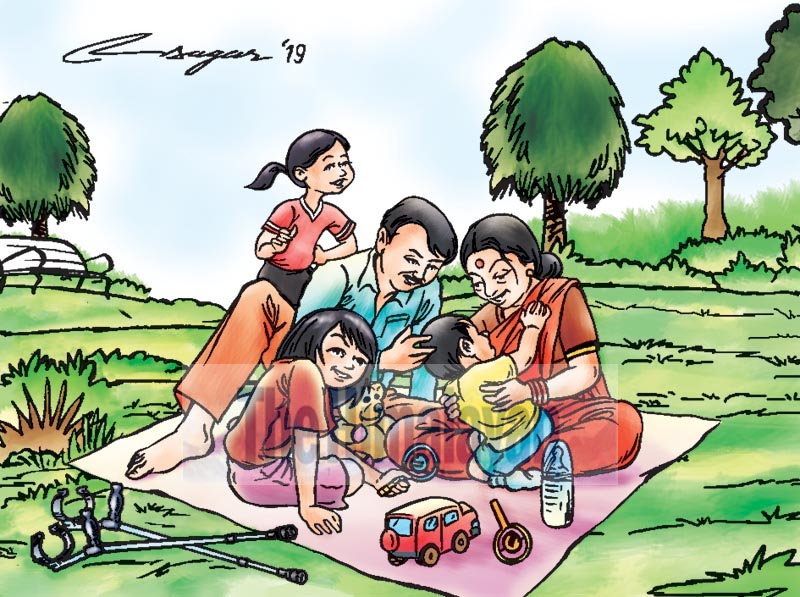The right to family: Support children to have one
Research has shown that, in their first years, children learn to form emotional attachments with caregivers, and they may lose this ability if they do not have stable family members with whom they can form such feelings
Research has shown that there are at least eight million children who have been placed in orphanages or other such foster institutions across the globe. In practice, the vast majority of children placed in such institutions, or orphanages, are not orphans. Estimates differ by country, but some 80-98 per cent of children placed in orphanages have at least one living parent. Most children are placed in institutions because of poverty or disability. Children are also placed in institutions for lack of accessible healthcare, social support services or education in the community.
For both children and parents, the right to a family has long been recognised as a matter of international human rights law. Article 16 of the Universal Declaration of Human Rights (UDHR) states that “family is the natural and fundamental group unit of society and is entitled to protection by society and the State.”
The Convention on the Rights of the Child (CRC) favours the protection of children to live with a family, but it does allow for the placement of children in “suitable institutions” when families are unavailable. The UN Convention on the Rights of Persons with Disabilities (CRPD) now creates stronger protections, requiring governments to ensure that all children receive the protection they need to live and grow up in a family.
Article 19 of the CRPD states that all people with disabilities have the right to live in the community with choices equal to others. Article 19 has been described as “a foundational platform for all other rights” because “a precondition for anyone to enjoy all their human rights is that they are within and among the community.” Article 19 is sweeping in its breadth and universal in its commitment to integration as it applies to all people with disabilities – no matter the type or severity of their disability.
The CRPD is stranded in a social model of disability rather than a medical or welfare model. A social model of disability, based on human rights issues, emphasises the fact that people with disabilities are holders of rights and not objects to be associated with charity.
Instead of allowing real or perceived impairment to hold a person back from exercising their rights or participating in society, this new anti-discrimination framework requires that society be made more accessible to bring about rights protection and full inclusion. Instead of looking to see whether a child is too disabled to live in society as part of a family (or whether a parent can keep his or her children), the CRPD requires society to become accessible by providing the support necessary to allow that child to live and grow up in a family.
The framework for legal enforcement using this social model of disability provides a more effective way of protecting both children and parents from denial of the right to a family.
Both in the developed and developing countries, poor and marginalised families are under pressure to give up their children because of economic demands and social stigma. It is obvious that most parents do not place their children in institutions eagerly; rather, they place them out of fear, trusting that they have no choice but to remove their children from their homes and place them in institutions.
Several other factors may contribute to the pressures on parents to give up their children. For example, deeply ingrained stigma against children with disabilities may bring shame onto an entire family with a disabled child. Also, parents of children with disabilities are told to place their children in institutions for necessary treatment and care.
Eric Rosenthal, executive director of Disability Rights International (DRI), states that despite strong international policies against institutions, there are many pressures on families, leading to new placement of children. The forces that lead to the break-up of families have, unfortunately, received support from misguided development and donor practices that support the institutionalisation of children. In many parts of the world, extensive charity aid and volunteer support create incentives for governments or private business to build new orphanages.
Placement of young children in institutions has been shown to be associated with abnormal brain development – increasing risks for emotional, cognitive and behavioural disorders. Research has shown that, in their first years, children learn to form emotional attachments with caregivers, and they may lose this ability if they do not have stable family members in their lives with whom they can form emotional attachments.
One large study among boys and girls from institutions in five African countries found that more than 50 per cent of children reported experiences of physical or sexual abuse. The most effective and cost effective approach to protecting children and avoiding any form of family break-up is to provide protection and support so that they can stay in their family or extended family.
In summary, the CRPD has created protections for the right to family. The vast majority of children now placed in institutions have parents who have never been given the support, opportunities or accommodation they need to keep their children. Governments are under an obligation to create the support needed for children to live in families and not in institutions, residential care or group homes.
Joshi is a human rights lawyer






